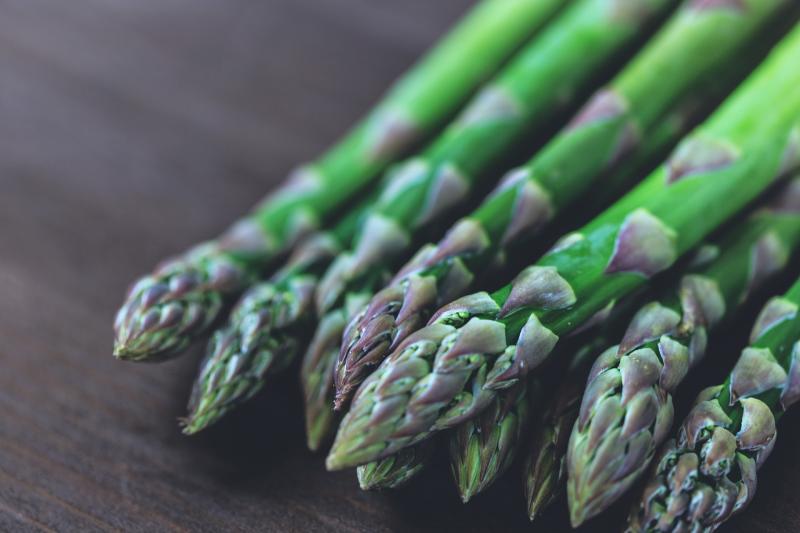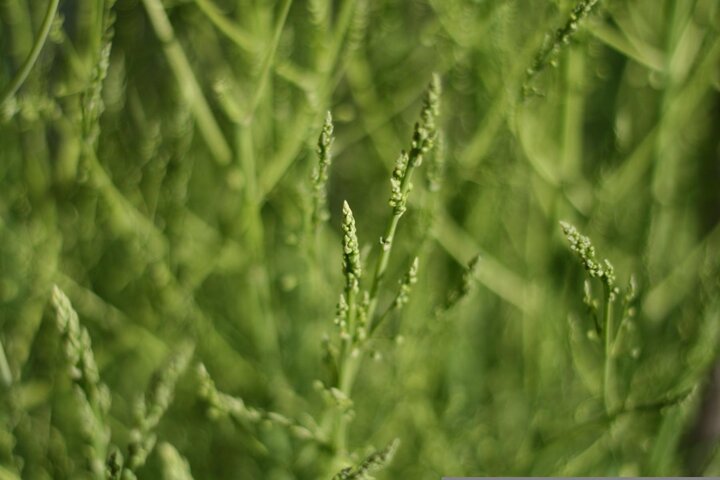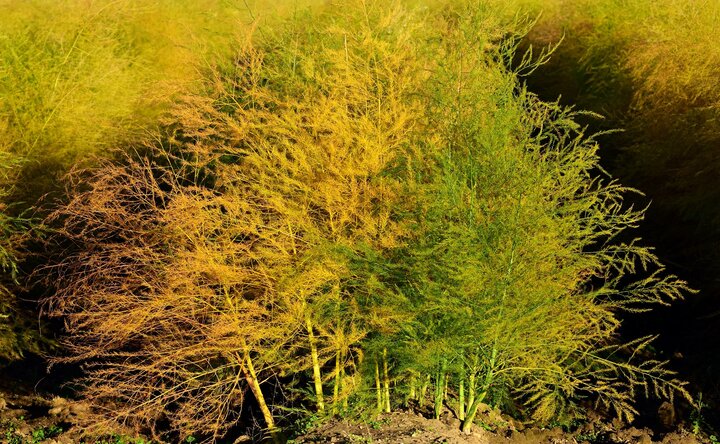Sarah Browning, Nebraska Extension Educator

Asparagus a special, wonderful fresh green vegetable. Picture by Pixabay.com
As a long-lived perennial, it's not uncommon for asparagus plants to live for 12-15 years or longer. So it's worth your time to take care of your plants, keeping the crowns healthy and vigorous to ensure a bountiful harvest each year. Follow these steps to ensure the health of your asparagus and next year's crop.
Time to Stop Harvesting
Towards the end of June, stop harvesting and allowing the fern-like foliage to grow throughout the remainder of the season. The foliage manufactures carbohydrates and sugars that will be stored in the plant's fleshy roots and crowns, and be used to generate next year's crop. The size of next year's crop (number of stems and stem girth) is directly related to the growth of this summer's foliage.
Fertilization & Watering
Each year after the final harvest, fertilize the asparagus planting. If your soil tests high in phosphorus, use a low phosphorus fertilizer such as 32-3-10 or 25-3-12, or a no-phosphorus fertilizer such as 30-0-10 or 24-0-15. The same is true for potassium. If your soil tests high, no additional potassium is needed.
Apply the fertilizer by sidedressing the rows and lightly tilling or hoeing it into the soil. Apply 50 lbs. Nitrogen per acre, 1 lb. per 100 sq.ft., or about 4 tablespoons per plant. Well-rotted manure can be used in place of commercial fertilizer. Apply approximately 50 lbs. /100 sq.ft. Be sure to use a fertilizer product only, not a "Weed and Feed" product containing herbicides targeted at broadleaf weeds. This could damage your asparagus, too.

Weed Control
Controlling weeds in an asparagus planting can be difficult, but it is a necessary step toward maintaining a high-yielding planting. Asparagus is a poor competitor with weeds, however, there are several techniques that can be used to control problem weeds.
If planted correctly, asparagus crowns are located approximately 6-8 inches deep in the soil, but plants grow each year enlarging in both width and height; meaning that an asparagus crown can expand upward in the soil profile over time. It's important to keep this depth in mind as we discuss various methods of control.
Mechanical Control - In small plantings, hoe or hand pull weeds. In larger plantings very shallow tilling, about 3-4" deep, between rows helps minimize weeds.
Cultural Control – Use 3-4 inches of mulch in conjunction with hoeing or tilling. Organic mulch, such as wood chips, grass clippings, compost or clean straw, prevents germination of new weeds, minimizes soil temperature fluctuations in summer and helps preserve soil moisture.

When using herbicide, always read and follow the label directions for personal protective equipment and application rates. Pay special attention to the pre-harvest interval, or the amount of time you must wait after a pesticide application before harvesting again.
Do not use salt! An old recommendation for asparagus weed control involved the application of salt, by pouring the salty water from an ice cream maker on the asparagus patch. This provided some weed control because asparagus is deep-rooted and has a higher sodium tolerance than some common weeds. However, salt quickly destroys soil structure, resulting in poor water penetration in the soil. High levels of salt will eventually kill the asparagus, too, or move out into nearby sections of your vegetable garden and kill other less salt tolerant vegetables. So if you make homemade ice cream on July 4th, don't pour the salt water on your asparagus patch.
In Fall…
Allow asparagus stems to stand over winter to catch and hold snow. The snow will help prevent drastic temperature fluctuations, as well as provide additional moisture as it melts. Remove the dead tops early in spring before new growth starts.
Images by Pixabay.com
- Asparagus plant after harvesting with foliage maturing for summer growth.
- Asparagus shrub in the fall.
Search Our Archive
Associated Video
Growing Asparagus The Right Way
Nebraska Extension Educator Kathleen Cue talks about how to properly manage asparagus